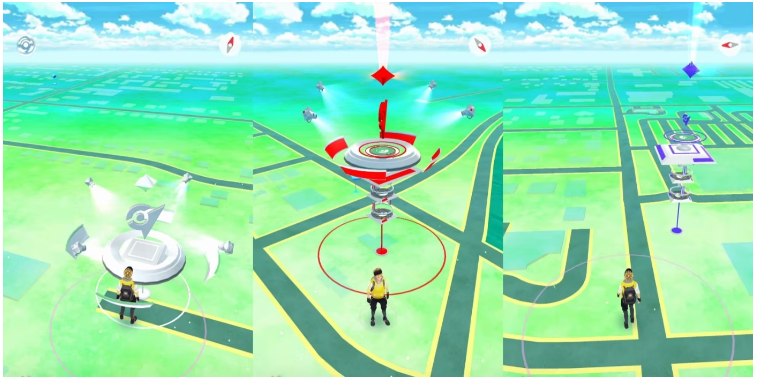Gaming
How to Hatch Eggs Effectively in Pokemon Go

One of the most satisfying aspects of playing Pokemon Go is being able to watch your eggs hatch. There is no experience in the world that compares to the satisfaction of witnessing a baby Pokemon that a trainer has laboured hard to hatch themself. However, incubating eggs can be a time-consuming process. When trainers have a full-time job, school, or other responsibilities that need them to sit for extended periods of time, walking 10 kilometres may be a little more challenging for them to do. Consequently, the question that needs to be answered is how a player can successfully hatch eggs.
To our good fortune, there are a few ways that those kilometres can be quickly acquired. It is possible that swiftly hatching Pokemon eggs depends on players knowing whatever type of egg they have, how often they should walk, and which type of incubator to utilise. The following are some helpful hints that will guide you through the process of efficiently hatching eggs in Pokemon Go.
Read Also: How to Catch a Wild Pokémon in Pokémon Go
How to Hatch Eggs Effectively in Pokemon Go
Pokemon Go! Egg Types

In the first place, there is a great deal of variability in the eggs that can be hatched. The Pokemon inside each egg are unique, and the distances between them vary. There are the eggs with green spots that need around 2 kilometres to travel to hatch. 5-kilometer eggs can be found, and they’re spotted with yellow. The 7-kilometer egg is golden and spotted with pink (which exclusively have Alolan eggs). The regular purple-spotted egg represents a distance of 10 km. In most cases, the Pokemon that hatch from a purple egg are the rarest. The chances of hatching a certain Pokemon from a given egg fluctuate over time, and the types of Pokemon that can be hatched from each egg vary over time as well.
Additionally, there are special Pokemon that can only be hatched from eggs located at 5 and 10 kilometres. However, the trainer won’t give you any of those eggs until you hit a particular mileage threshold. Eggs can only be obtained through weekly Fitness challenges, spinning stops, and friend presents. However, players can never predict whether or not they will obtain an egg while spinning a stop or receiving a gift. It’s up to the players to keep trying and not give up.
Incubators Are A Pokemon Go! Essential

In order to hatch an egg, players will need to obtain an Incubator. There is an Incubator available to users at no cost with unlimited uses, and there are other Incubators available for purchase that can only be used three times. The process of deciding which incubator to use can be complicated, but there is a simple approach to determine which egg belongs in which incubator.
Incubate the 2 KM eggs first if players have access to an infinite one. As a result, this Incubator should be able to speed up the hatching process by cycling through 2 KM eggs, which have a shorter hatch period. Players should use the 10 KM egg if they have access to a three-use Incubator. In order to get the most out of the Incubator, it is recommended that you use it three times, as 10 KM eggs are more difficult to hatch. The Super Incubators are no different in this regard. As a result, gamers will spend less time wandering and more time hatching these eggs. Consequently, this will increase the value of the Incubator for players.
How Pokemon Go! Measures Distance

Up to around 10.5 kilometres per hour, Pokemon Go! can now monitor your walking speed (or 6.5 miles per hour). Those who exceed this speed will have their distance travelled discounted by Pokemon Go!, or worse, ignored entirely. The speed-lock popup appears when players’ speeds hit 35 kilometres per hour (or 22 miles per hour), suggesting that very little of their journey will be recorded after that point. No one is advocating for a slow pace of play, but these numbers should be kept in mind.
Going undercover as a passenger in a car can be a helpful method for this. Vehicle can refer to more than just cars, though. You might also use a bus, train, or bicycle instead. To put it another way, this is a great opportunity for gamers to experience the vehicles at their more leisurely paces. Thus, the halting distance will be included when measuring travel times by automobile, bus, or rail. And don’t underestimate the power of these minor figures.
Adventure Sync in Pokemon Go!

It’s high time for players to activate this option if they haven’t already. Incorporating adventure sync into Pokemon Go was a brilliant move. It motivates gamers to keep walking and keeps track of their steps even when the app is closed.
Pokemon Go! players cannot go without this brand new aid. Once Adventure Sync is activated, the distance travelled after that will also contribute to the goal of hatching Pokemon eggs. You may now go for a stroll without worrying about the app eating your power. You can start your trek immediately after activating Adventure Sync. A newly hatched Pokemon will be within reach after taking all those measures.
Pokemon Go!’s Lucky Eggs

Finally, remember that you can speed up the process of hatching Pokemon eggs by using Lucky Eggs. Dropping a Lucky Egg near the moment an egg is about to hatch is a good idea (or if you have many incubators timed to hatch at roughly the same time). When an egg is hatched, the player’s experience level will temporarily increase by two levels.
There is a 30-minute window in which using a Lucky Egg will double a player’s experience gain. Players gain 200 Experience Points for hatching a 2 KM egg, 500 Experience Points for a 5 KM egg, and 1000 Experience Points for a 10 KM egg. These experience points can be easily doubled if the player manages to drop a Lucky Egg before it hatches. As if a Double XP event weren’t enough, gamers can also quickly acquire new Pokemon and hatch eggs. It’s time for the players to hit the pavement. In a short while, the adorable Pokemon eggs will emerge.
FAQs
What is the optimal speed for hatching eggs in Pokemon Go?
According to the information provided on this page, the maximum pace for hatching eggs is 24 kilometres per hour, and if you have incense and go 200 metres, you will encounter a wild Pokemon from incense every minute. The equivalent of 12 kilometres per hour is reached by multiplying 200 metres by 60 minutes.
Which egg incubator is best Pokemon Go?
While the blue incubators have limited reuse, the orange “infinity” incubator can be used an unlimited number of times. However, unlike the infinity incubator, the limited-use incubators can successfully hatch eggs in a shorter amount of time. There are typically much more 2-kilometer and 5-kilometer eggs than 10-kilometer ones.
Can you trick Pokémon Go walking?
An Android GPS spoofing app makes it easy to conceal your true position. Pokemon Go will think you’re walking when you do this. iPhone owners, meanwhile, would need to jailbreak their devices in order to access the feature.
Does driving work on eggs Pokemon Go?
If you drive at a walking pace, you can hatch eggs in Pokemon Go. It also means that if your speed exceeds 5 mph while driving, the game will realise that you’re not actually playing and will pause the hatching process until you’ve stopped. Driving while trying to play a game is dangerous, even at these moderate speeds.

















